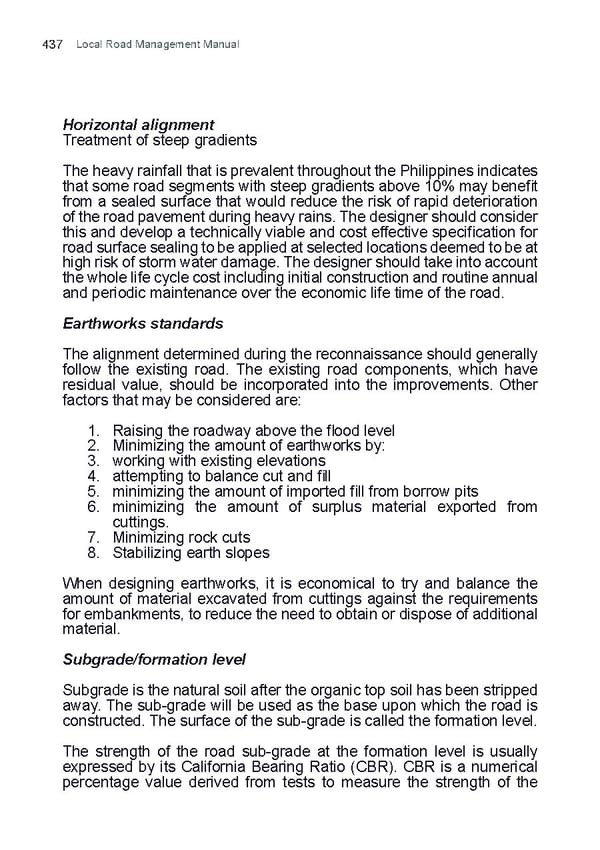Local Road Management Manual 437 Horizontal alignment Treatment of steep gradients The heavy rainfall that is prevalent throughout the Philippines indicates that some road segments with steep gradients above 10% may beneift from a sealed surface that would reduce the risk of rapid deterioration of the road pavement during heavy rains. The designer should consider this and develop a technically viable and cost effective speciifcation for road surface sealing to be applied at selected locations deemed to be at high risk of storm water damage. The designer should take into account the whole life cycle cost including initial construction and routine annual and periodic maintenance over the economic life time of the road. Earthworks standards The alignment determined during the reconnaissance should generally follow the existing road. The existing road components, which have residual value, should be incorporated into the improvements. Other factors that may be considered are: 1. Raising the roadway above the lfood level 2. Minimizing the amount of earthworks by: 3. working with existing elevations 4. attempting to balance cut and ifll 5. minimizing the amount of imported ifll from borrow pits 6. minimizing the amount of surplus material exported from cuttings. 7. Minimizing rock cuts 8. Stabilizing earth slopes When designing earthworks, it is economical to try and balance the amount of material excavated from cuttings against the requirements for embankments, to reduce the need to obtain or dispose of additional material. Subgrade/formation level Subgrade is the natural soil after the organic top soil has been stripped away. The sub-grade will be used as the base upon which the road is constructed. The surface of the sub-grade is called the formation level. The strength of the road sub-grade at the formation level is usually expressed by its California Bearing Ratio (CBR). CBR is a numerical percentage value derived from tests to measure the strength of the
 LRM Manual CMGP Page 436 Page 438
LRM Manual CMGP Page 436 Page 438